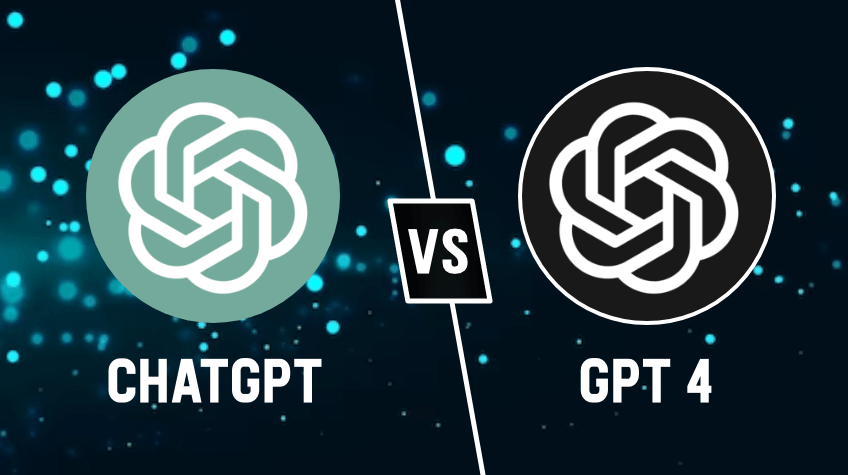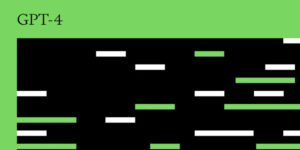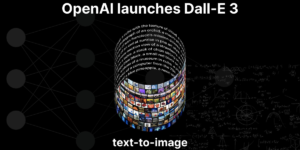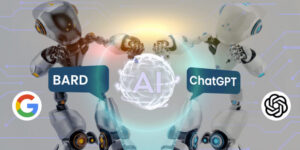
OpenAI debuted ChatGPT in November 2022 and has recently announced the release of GPT 4, the next important development in AI. The company says that the next edition of OpenAI’s Large Language Model (LLM) is far better than its predecessor, GPT-3.5. It’s anticipated that GPT 4’s new features would significantly improve the user experience and usher in a new era of innovation. Let’s check what Chatgpt vs GPT 4 has in stock for us here.
Introduction
Compared to its predecessor, GPT-3.5, which powers the ChatGPT, OpenAI claims GPT 4 can provide “human-level performance.” Because of its superior problem-solving and general knowledge skills, it can even handle tough issues with better accuracy.
OpenAI examined the new model using numerous benchmarks, including computer simulations of human trials, and discovered that GPT 4 excelled over other large language models by a substantial margin.
GPT 4’s capacity to take photos as inputs and produce descriptions, classifications, and analyses is a major feature. This means that users would be able to send in photographs and get responses tailored to the content using GPT 4.
OpenAi’s GPT4 is reported to perform better than ChatGPT, which is based on GPT-3.5. This is because GPT 4 is a more complicated model.
That’s not it! GPT 4 has a lot many better features than GPT-3.5. So, if you’re wondering how GPT 4 is different from its predecessor, GPT-3.5, then read this post.
In this post, we will discuss ChatGPT vs GPT 4 and the differences between them. Besides being able to use and analyze over 25,000 words of text, GPT4 is a significant improvement over its predecessor in this regard.
So, let’s get started…
What is GPT 4?
Released on March 14, 2023, GPT 4 is a massive multimodal language model, the fourth in the GPT series. It is developed by OpenAI, an artificial intelligence (AI) Research Company. It is now available in Bing and ChatGPT. It is said to be better than its predecessor, GPT-3.5.
According to the company, “the basic formula hasn’t altered much in a long time. In any case, “it’s still like building a starship, where you need to get all these minor components correct and make sure none of it breaks.”
OpenAI has decided not to share GPT-4’s size with the public. Unlike prior releases, the corporation is not sharing any information about the development of GPT4. This includes the data used, the resources used, and the training methods.
All that OpenAI stated so far about its latest release is that it spent six months improving the security and precision of GPT 4.
According to OpenAI, it employed the same reinforcement learning with the human input approach it did with ChatGPT.
ChatGPT vs GPT 4
The term “Chat” pretty much explains itself; it refers to a computer interface that allows for two-way communication. The program that OpenAI has developed is currently in its fourth iteration, referred to as “generative pre-trained transformer 4.” The term “Generative Pre-trained Transformer” refers to a method of “deep learning” that makes use of artificial neural networks to generate text that is similar to that produced by humans.
1. ChatGPT generates content that appears to have been written by a human by processing vast amounts of data taken from the internet. Moreover, it provides users with comprehensive responses to questions they ask.
OpenAI’s latest language model, GPT 4, can generate text that is quite similar to the way that humans speak. The existing ChatGPT, which is built on the GPT-3.5 technology, has been improved with this most recent version.
2. According to OpenAI, GPT 4 is more advanced than its predecessors in three important areas: inventiveness, visual perception, and the ability to handle context.
3. It is believed that GPT-4 is substantially more creative than its predecessor, both in terms of its ability to generate new creative initiatives and its ability to collaborate with users on existing creative endeavors. This involves composing music, creating screenplays, producing technical writing, and even adjusting to the writing style of a particular user.
OpenAI has not only increased GPT -4’s creative capabilities and its capacity to process visual input, but it has also made it better able to deal with extended context.
4. As with its predecessors, the new GPT 4 large language model will be different. Compared to GPT-3.5, it is meant to be a significant improvement. GPT4 is built with a “multimodal system.” In addition to text, this system can also evaluate media such as photos, videos, and audio.
OpenAI’s GPT 4 performs at or above human levels in a wide range of academic and professional benchmarks. It is a large multimodal model that can process both image and text inputs to generate textual results.
5. The newly developed language model is now able to process up to 25,000 words of text provided by the user, and it can even interact with the content retrieved from a web link provided by the user. This improved capability can be utilized to assist in the production of long-form material and to promote “extended dialogues.”
6. GPT-4 is capable of accepting both text and graphics as input. Moreover, it can generate text outputs from inputs containing both text and graphics.
7. The company claims that compared to GPT-3.5, GPT4 is 82% less likely to provide a response to a request for content that OpenAI does not permit and 60% less likely to make stuff up.
8. When talking to a human, these huge language models may have been “trained” on millions of pages of text from the internet, books, and other sources, but their “memory” is limited (one sympathizes). GPT-3.5 and the earlier version of ChatGPT set the limit at 4,096 “tokens,” which is equivalent to around 8,000 words or about four or five pages of a book. So, it would essentially lose sight of something after it traveled so far “back” in its attention function.
The maximum number of tokens in GPT 4 is 215, which may look similar. With around 64,000 words (or 50 pages), that’s enough for a full-length play or a significant short story. This implies it will be able to retain the equivalent of 50 pages of text, vastly enhancing its capacity for dialogue and text generation. You can go back as far as twenty pages in the discussion log and as far as thirty-five pages in the event log.
Related Post: What are the Different Types of Chatbots
9. Everything in the AI sector, from data to testing to research papers, is written and spoken in English. Any written language can and should have access to the benefits of massive language models. GPT-4 makes progress in this direction by proving it can accurately answer thousands of multiple-choice questions in 26 languages, ranging from Italian to Ukrainian to Korean.
OpenAI has been working on many different areas of AI, including “steerability,” as indicated in its post describing AI behavior. “Steerability” refers to the ability to modify behavior on command.
It’ll let programmers command their AI with a simple “system” message describing their preferences for the AI’s actions and behaviors.
10. In addition, with the right set of constraints in place, API users can create individualized user experiences. This can even be beneficial, as when playing the part of a sympathetic listener, or harmful, as when the model is tricked into believing it is bad or depressed.
11. The “classic ChatGPT personality with a fixed verbosity, tone, and style” can now be modified in GPT 4 from GPT-3.5 thanks to the enhanced native integration of steerability.
Developers can even set the tone, manner of communication, and interaction with the user from the very beginning.
Conclusion
GPT 4 has been trained on a large number of fraudulent prompts, which users generously sent to OpenAI over the course of a year or so. Due to improvements in “factuality,” “steerability,” and “refusing to travel outside of guardrails,” the new model represents a significant upgrade over its forerunners.






